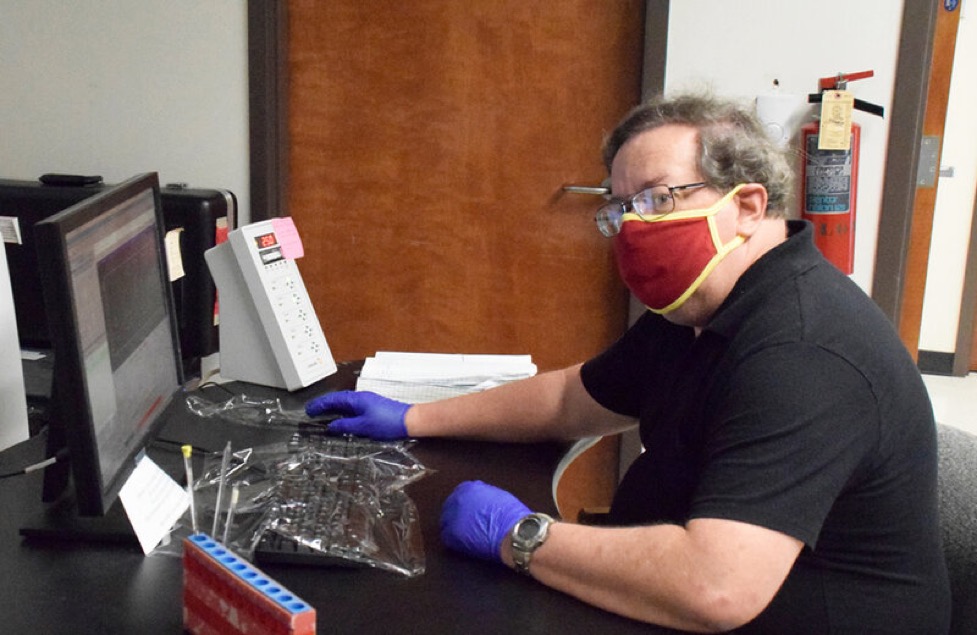Just as it’s harder to have a conversation in a crowded sports arena than in an intimate coffeeshop, random background noise stymies scientists’ best efforts to collect and measure data.
Known as signal-to-noise ratio, it’s important in everything from the quality of recorded sound to the clarity of data generated in nuclear magnetic resonance (NMR) spectroscopy, widely used in modern chemistry to help identify chemical compounds.
Longtime USC Dornsife College of Letters, Arts and Sciences staff member Allan Kershaw wrote an easy-to-use computer program that rapidly processes data and graphically displays NMR spectra as a series of lines in an image.
The USC Stevens Center for Innovation licensed Kershaw’s software in 2019.
“The software dramatically reduces experiment time and increases sensitivity for one-dimensional NMR experiments,” said Nikolaus Traitler, licensing associate at the USC Stevens Center. This spring, Kershaw received a Technology Commercialization Award from the center for his invention.
Read the rest of the story, Longtime chemistry staffer finishes late professor’s decades-long project, which first appeared on USC Dornsife News.
